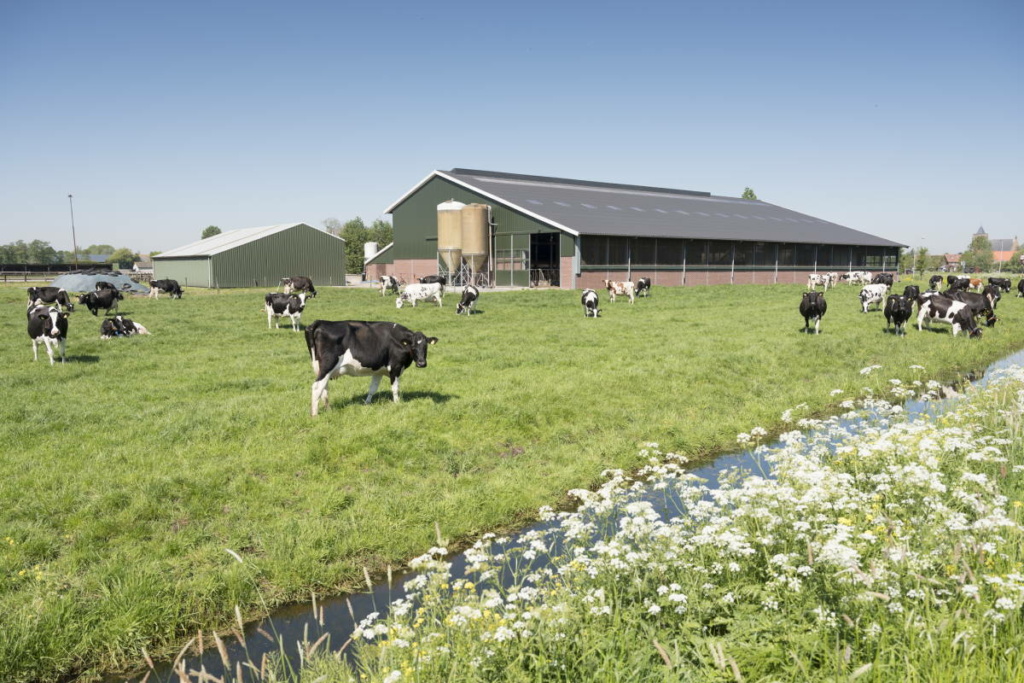
Spectrik’s real-time sensor could offer a way out of the nitrogen crisis
Few startups have to navigate a more explosive public debate than Spectrik. Farmers’ protest movements and their political allies consider their way of life to be under threat, while environmentalists and green parties insist that the reduction of livestock is the only way out. Exacerbating the problem is the fact that we know that overall emissions are too high, but we don’t know the individual contribution of each farm.
That’s why Spectrik’s CEO Rick Jongen feels his company’s ammonia sensor can force a breakthrough (ammonia is the principal component of agricultural nitrogen emissions). “The issue has been a lack of hard data. Policymakers had to rely on modeling to draw up measures, which farmers – who have been working hard for years to reduce emissions – considered random and unjust. Once there’s uncontested data available, I think everyone involved will be able to commit to ways that curb emissions, whether through innovation, extensification or accepting a buyout.”
That’s not all. “There’s a lot of emission-curbing technology available, such as air scrubbers, but most solutions are too expensive to be running 24/7. At the same time, emissions aren’t constant throughout the day. Having real-time emission data can therefore help deploy technology more effectively.” This, in turn, will improve air quality inside the barn, to the benefit of its inhabitants. “High ammonia concentrations are bad for animals, but simply venting the gas into the outdoors is harmful to the environment. Our sensor will allow for tailor-made solutions, which won’t be the same for every farm.”
Front-runner
A typical barn presents a challenging environment for sensors. Airborne dust, high humidity, significant temperature fluctuations, aggressive cleaning procedures – these factors can interfere with accuracy and even break devices. Jongen: “Currently available technology proved either too fragile or too expensive for large-scale deployment.”
Jongen, a Tilburg University graduate in strategic management, became aware of this issue while being part of the venture-building program of HightechXL. He was looking into the specifics of the integrated-photonics market when the nitrogen crisis peaked in 2022. “I’d learned about the possibilities of integrated photonics as a sensing technology. This got me motivated to involve myself in this important societal issue after graduation.”
“I knew that if I was going to try and make a difference with a technology venture, I had to do it right away. If I took a job at a large firm, my lifestyle would adjust to the pay and I’d most likely never want to take a risk again.” Rutger Bregman, the historian who recently started encouraging talented people to dedicate their careers to noble causes, couldn’t have said it better himself.
Jongen is glad for the opportunity. “I don’t think Spectrik could have come into existence in any other country. The Netherlands is the first country in which nitrogen emissions have become a major political issue; at the same time, it’s a global front-runner in a technology that’s part of the solution.” Sporting over 60 corporate members today, the Dutch Photondelta ecosystem is at the forefront of the industrialization of integrated photonics technology.
Test the waters
Jongen spent the past two years performing market research and subsequently drawing up product specifications for different use cases – poultry and pig farming have different requirements, for example. For the next phase, physicist Floris van Nyendaal has recently joined the company to oversee system design and the integration of components onto a photonic integrated circuit. Finally, Eindhoven-based optical engineering company VTec Lasers & Sensors is on board to accelerate both technology and product development. The start of field tests is planned for later this year.
“It won’t be a stand-alone product. We aim to partner with agricultural technology suppliers to enable fully integrated emission-reducing technology. Our first target is pig farming, especially focusing on animal welfare. This use case is a good one to test the waters, and our market research has shown there’s plenty of demand. From there, we’ll move on to more settings and hopefully start to contribute to reduction of emissions.”
Spectrik expects to make its first sale in 2027.
This article was written in close collaboration with Photondelta. Main picture credit: Istock/ahavelaar






